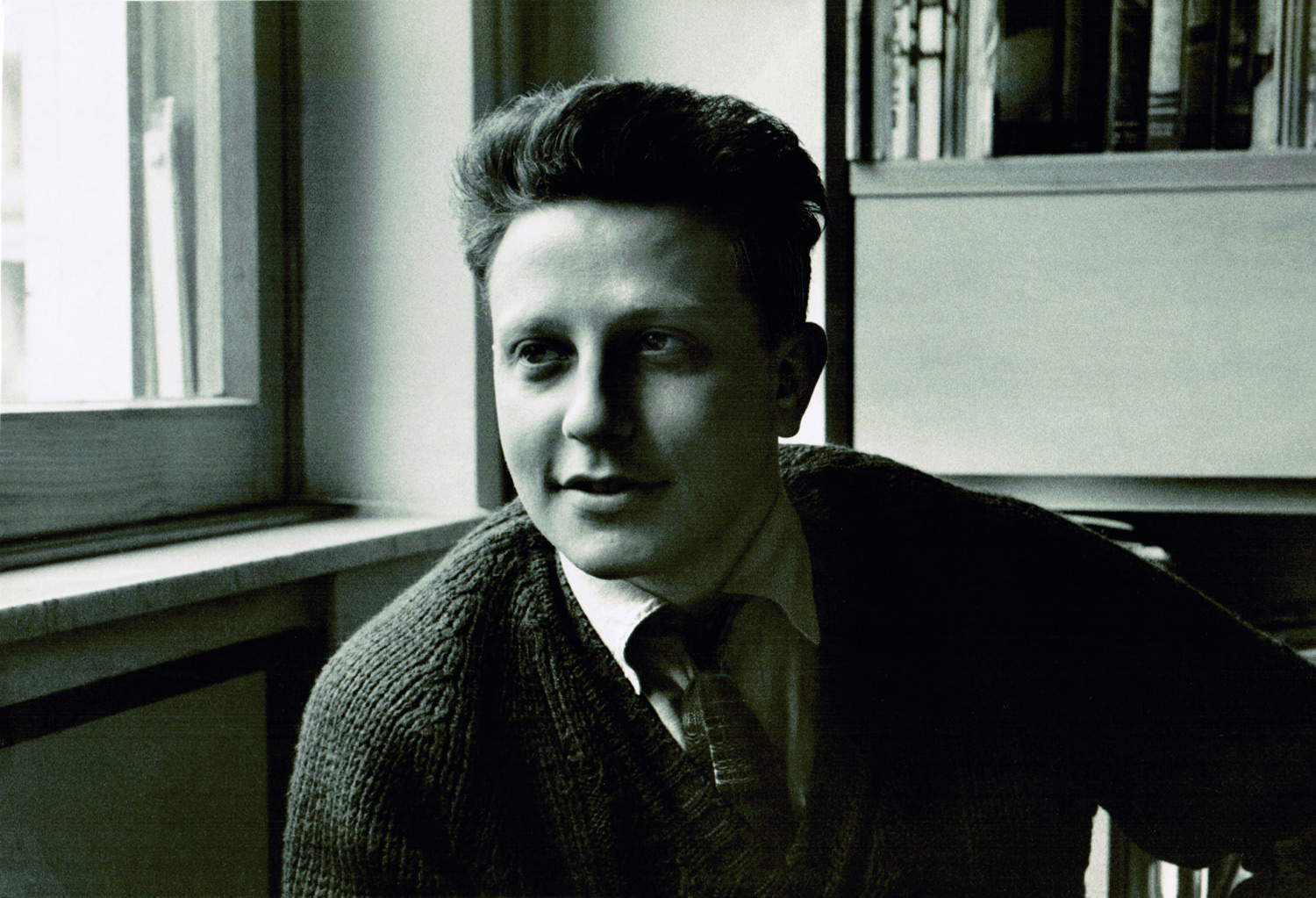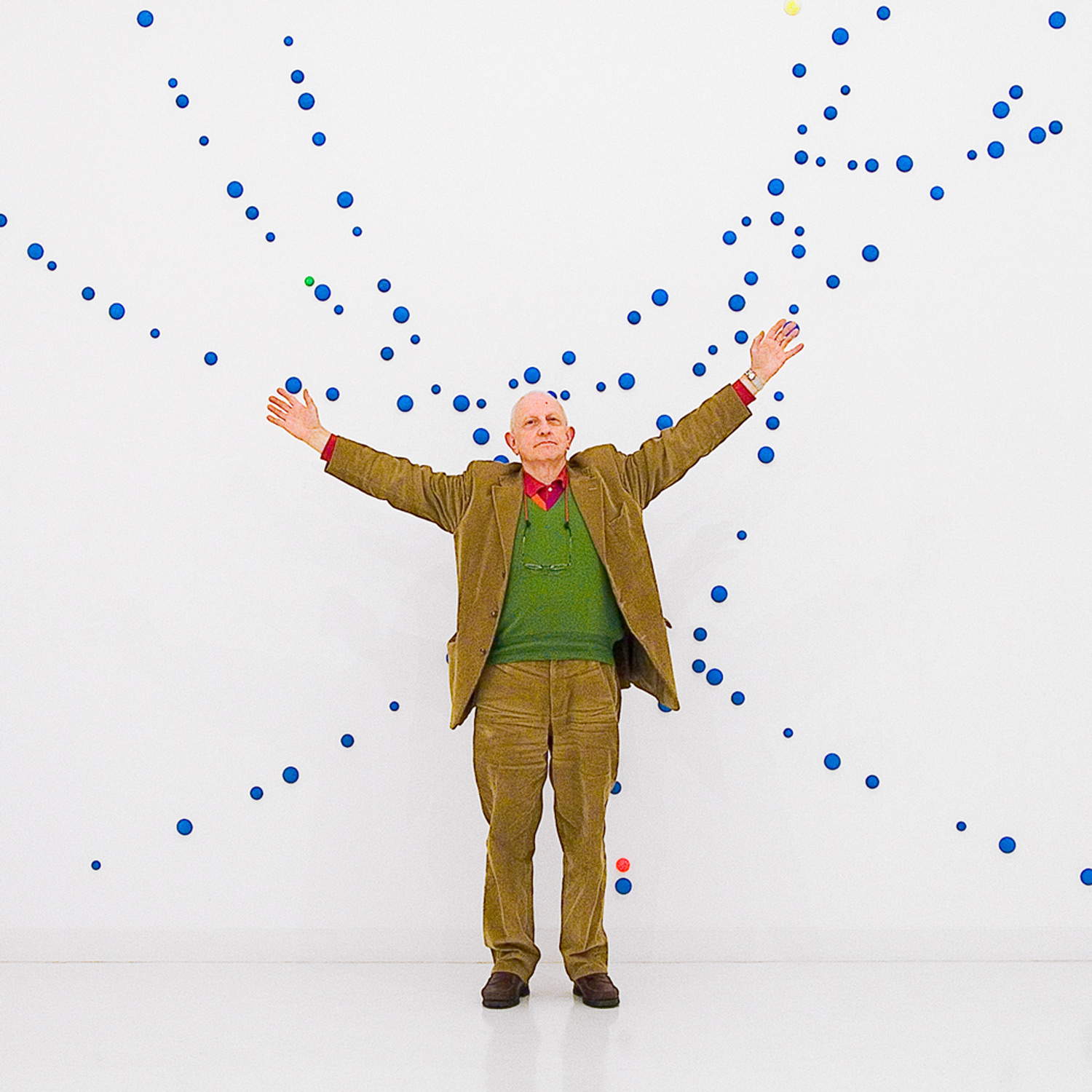Enrico Crispolti: two photographs
A remembrance of Enrico Crispolti written by Claudio Zambianchi, professor of Contemporary Art History at the University of Rome “La Sapienza,” and curator of the day that the Department of Art History at the Roman university is dedicating, on May 27, 2019, to the scholar who died last December (and which follows the Milan day on April 4.
In my studio at the university, Enrico Crispolti looks at me from above, in a photograph that shows him as a 24-year-old, almost a teenager, slant-lit from a window, somewhat as in the paintings of Flemish primitives... It is the photo (from 1957) used in the spring of 2016 for the poster for the presentation of a collection of his writings dedicated to Alberto Burri, assembled into a volume by Luca Pietro Nicoletti, which we discussed with him one afternoon at the Museo Laboratorio di Arte Contemporanea at Sapienza. This youthful photo, in my mind, is now superimposed by another one, the one taken of him by Ignazio Gadaleta a few months before his passing, and chosen by the organizers of the first of five meetings in his honor, organized by the Accademia di Brera in Milan on April 4: Enrico stands with his arms wide apart, against the background of a quantity of colored circles that seem to expand from his open hands. Despite the fact that the pose is similar to Leonardo’sVitruvian Man, the measure of all things, it rather gives me the idea of Enrico within a large galaxy, who wisely accepts its commensurability and manages to keep himself in a difficult balance, able to draw meaning from things and return it to the world. Between the young critic filmed in the intimacy of the studio and the “spatial” Enrico of a few months ago, sixty years of work, studies, emotions, teaching, and encounters are scaled...
 |
| Enrico Crispolti in 1957 |
 |
| Enrico Crispolti in 2005, in Milan, at the Naviglio Modern Art Gallery, photographed by Ignazio Gadaleta in his work environment Celesti magnetici (to the sky of Milan) |
Enrico I met him in person rather late, after, however, having seen and heard him so many times at exhibitions and conferences; even, in 1989, during a student unoccupation at Sapienza University. In 1992 I had been entrusted with the filing of a disparate mixture of works by many artists; to prepare the work in the required time the libraries in Rome were not sufficient for me and I asked for help from a friend, Carlo Alberto Bucci, who was then working in the Crispolti Archive. I then asked Enrico for permission to attend his studio and did not move from there for the three months it took me to complete the files. I learned about theArchivio, a magnificent resource collected over time by a critic who had made research, militancy, and capillary information about Italian (and to a large extent foreign) twentieth-century art a reason for living. Enrico’s studies on the historical twentieth century were in fact accompanied, in a continuous back and forth, by those dedicated to the present art. Locchio that looks at the art of the past is always contemporary: Enrico had learned this from his first teacher, Lionello Venturi, and had never tamed it.
In the months I spent at the Crispolti Archive I got to know not only the intellectual whose endless curiosities and prodigious capacity for work the archive was the levidence and material sediment, but also the person. Enrico was generous, affable-he was so kind, Enrico, especially to the younger ones. Even though he had never taught at Sapienza and I had not attended the School of Specialization in Siena, where so many graduate students in contemporary art history from all over Italy went to specialize, Enrico opened his doors to me, made his books, his papers, his conversation available to me; even half of a stuffed pizza at the bar on Via Ripetta in front of theArchivio, when we happened to have a bite together, with Carlo Alberto and his wife Manuela Crescentini. Kindness, generosity, openness were the personal counterparts of an intellectual disposition that had led Crispolti to take an interest in things that were often strikingly different from one another, from Guttuso to Fontana, dallInformale to Futurism, Burri to Vacchi, Moreni to Dorazio...
In Salerno and then in Siena, Enrico trained generations of Italian contemporaryists: in his work as a professor of art history, the need for the constant cross-reference between lattualità and history that I mentioned earlier was very noticeable. His students not only heard his lectures, but listened to the artists, whom Enrico continually invited, saw them up close, were able to converse with them.... Enrico was a very good professor: we at Sapienza have had proof of this again in recent years, when we invited him to speak to our students, not only on the Burri occasion mentioned above, but also when, with lamica and colleague Ilaria Schiaffini (a former student of Enrico’s at Siena), we asked him to come and speak to us about Lucio Fontana, on the occasion of a study day organized in 2018. In Enrico’s talk, not only his many memories surfaced (he was the only one among those present who had known the artist), but also and continuously sharp and illuminating critical notations, such as the idea that for Fontana drawing, even in its freest and most imaginative key, should always be traced back to a design function. Enrico was also with us at a conference on Irene Brin and Gaspero del Corso’s LObelisco Gallery, which he had begun to frequent as a boy in the 1950s. In listening to him speak to our students, there leaked out of Enrico an inner quality of deep sympathy for younger people; an identification, perhaps, with those novice boys and girls, similar in so many ways to that young Enrico photographed at age twenty-four near the window of his room, against the backdrop of a still-slim bookcase. The wealth of the Archive was still the future.
Warning: the translation into English of the original Italian article was created using automatic tools. We undertake to review all articles, but we do not guarantee the total absence of inaccuracies in the translation due to the program. You can find the original by clicking on the ITA button. If you find any mistake,please contact us.





























